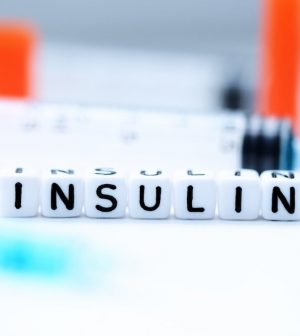- How Daily Prunes Can Influence Cholesterol and Inflammation
- When to Take B12 for Better Absorption and Energy
- Epsom Salts: Health Benefits and Uses
- See What Saffron Can Do for Sleep and Heart Health
- 6 Common Mistakes to Avoid Before Your Physical
- Can Sweating Really Help You Beat a Cold?
- Strengthening Your Relationship: Practical Strategies
- Skip Storing This Everyday Product in the Fridge Door
- Green Tea + B3 Pairing May Boost Brain Health
- Navigating Your Midlife Crisis: Embracing New Possibilities
Everything You Need to Know About Insulin

Insulin can be a critical part of managing diabetes, but patients may not know all of the ins and outs of using the medication effectively.
Luckily, the American Diabetes Association (ADA) has plenty of information and tips on using insulin.
First, there are different types of insulin, depending on how fast they work, when they peak and how long they last. Insulin is also available in varying strengths and all insulin made in the United States is produced in a lab, the ADA noted.
Whether someone needs to take insulin, and how much, varies by patient and the type of diabetes a patient has.
In people with type 1 diabetes, the pancreas no longer makes insulin at all. The beta cells have been destroyed, and these patients need insulin shots.
With type 2 diabetes, people make insulin but their bodies don’t respond well to it. Some people with type 2 diabetes need insulin.
Why does insulin have to be given as shots? If taken in pill form, it would be broken down during digestion, so it must be injected into the fat under your skin. In rare cases, insulin can trigger an allergic reaction at the injection site. Talk to your doctor if you believe you are experiencing a reaction, the ADA advised.
Depending on a patient’s needs, there are several types of insulin available:
-
Rapid-acting insulin begins to work about 15 minutes after injection, peaks roughly one or two hours after injection and lasts between two to four hours
-
Regular or short-acting insulin usually reaches the bloodstream within 30 minutes after injection, peaks from two to three hours after injection and works for three to six hours
-
Intermediate-acting insulin generally starts working about two to four hours after injection, peaks four to 12 hours later and is effective for about 12 to 18 hours
-
Long-acting insulin reaches the bloodstream several hours after injection and tends to lower glucose levels up to 24 hours
-
Ultra long-acting works in six hours, does not peak and lasts about 36 hours or longer
Premixed insulin can be helpful for those who have poor eyesight or dexterity and it’s convenient for people whose diabetes has been stabilized, the ADA added.
In 2015, an inhaled insulin product called Afrezza became available in the United States. Afrezza acts rapidly at the beginning of each meal and can be used by adults with type 1 or type 2 diabetes. However, it is not a substitute for long-acting insulin, the ADA noted. Afrezza must be used in combination with injectable long-acting insulin in patients with type 1 diabetes and in type 2 patients who use long-acting insulin.
It begins working within 12 to 15 minutes, peaks by 30 minutes, and is out of your system in 180 minutes.
Apart from differences in how quickly insulin acts and how long it lasts, there are different strengths of the medication, the ADA noted.
The most commonly used strength in the United States is U-100, which means it has 100 units of insulin per milliliter of fluid, though U-500 insulin is available for patients who are extremely insulin-resistant.
If you’re traveling outside of the United States, be certain to match your insulin strength with the correct size syringe.
More information
The National Institute of Diabetes and Digestive and Kidney Diseases has more on diabetes.
SOURCE: American Diabetes Association, news release
Source: HealthDay
Copyright © 2026 HealthDay. All rights reserved.










